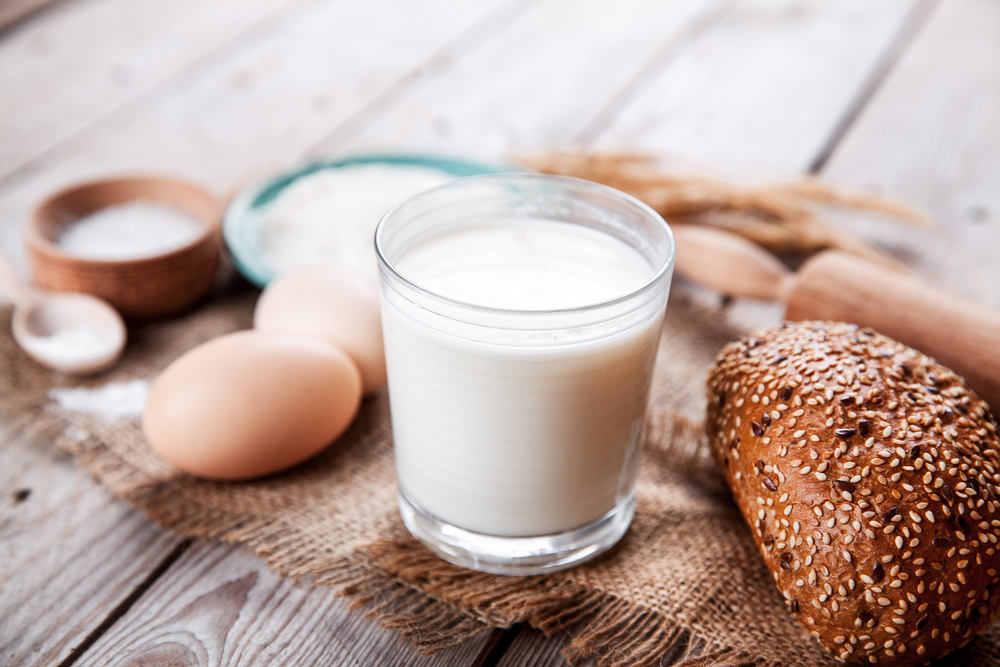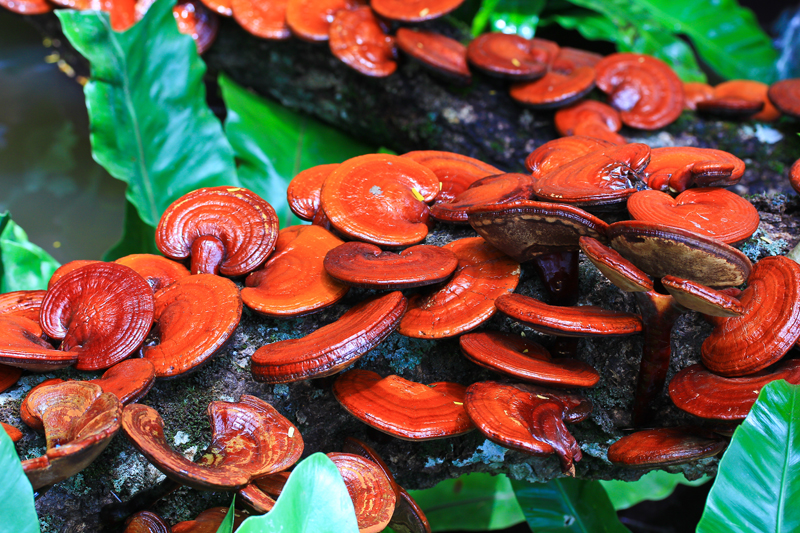All women will deal with hormonal upheaval when perimenopause and menopause set in. For some the effects are minimal. For others they can be majorly disruptive. Not only can hormonal imbalance cause physical, mental, and emotional distress, but hormonal skin aging too.
First off, let’s go over the difference between perimenopause and menopause. The common perception is that menopause is the time after you stop having periods. But actually, the term refers to the time when periods have ceased for at least one year. After this, the next stage is considered postmenopause.
So what the heck is perimenopause? Perimenopause is the time leading up to menopause when hormones begin to shift. This stage can start in a woman’s 40s or even 30s and may last up to 10 years. The most common symptoms of hormonal imbalance due to perimenopause are irregular, lighter, or heavier periods, or a combination of all three. Breast tenderness, fatigue, headaches, hot flashes, and worsened PMS are also commonly part of the package.
Skin changes are another factor of perimenopause. Hormonal skin aging can look like itchy skin, redness due to hot flashes, rosacea, skin may become more oily or more dry, thinner skin, increased skin sensitivity, hyperpigmentation, sagging, fine lines, and wrinkles. Areas where skin is thinner, such as the neck and eye area, are usually first to show signs of aging and hormonal imbalance.
Hormones and Skin: Which Hormones Cause Hormonal Aging Symptoms
It helps to understand how hormones work in the body and affect the skin, not only in determining where you may be imbalanced but how to solve your skin issues. While hormones and how they interact in the body and with each other is very complex, here is a snapshot of how the different hormones affect the skin.
Estrogen, when balanced, makes us look and feel youthful, gives us energy and a healthy libido, and makes us feel upbeat. This hormone also keeps skin plump, hydrated, and smooth. As you can imagine, once estrogen goes out of balance due to perimenopause or menopause, skin begins to look older. Studies on postmenopausal women show that low aging skin estrogen levels are linked to dryness, fine wrinkling, thinning, decreased elasticity, and a decline in collagen.
Progesterone and estrogen interact with each other and when estrogen is out of balance, progesterone usually follows suit. This means that lower levels of progesterone show up on the skin in much the same way as estrogen, thinning, sagging, and dryness. But since this duo works together, balanced hormone levels can mean that progesterone supports the effects of estrogen.
Testosterone keeps skin looking firm and supple by supporting healthy collagen and elasticity. It also increases oil production in the skin, which is why woman at midlife who experience hormonal acne often have elevated testosterone levels. Low levels of testosterone usually cause skin to feel dry, thin, and irritated and skin conditions may appear.

Other Factors That Affect Skin During This Time of Life
While it would be easy to blame every skin complaint on hormones, it’s safe to say there are other factors that affect the skin during this time of life too. Eating the wrong foods, lack of proper sleep, and daily stressors can throw hormones out of whack and shows up on your face.
Diet is something many struggle with and this can become more of an issue once perimenopause and menopause hit. You may find you are sensitive to foods you used to consume with no issue, like dairy, eggs, or wheat. It can also be more difficult to keep extra pounds off at this time.
Are you getting restorative sleep? If you wake up feeling tired most days, have a headache or feel otherwise unwell upon awakening, or have trouble falling or staying asleep, your sleep is likely less than restful. Your kids may no longer be small and super demanding of your time, but the stressors that come with midlife, careers, aging parents, and parenting teens are enough to keep the most emotionally balanced up at night.
Common Hormone Disrupting Ingredients and Skin Aging
Then there are those nasty ingredients linked to hormonal disruption that show up in everything from food, to plastics, to cosmetics. These chemicals, also known as endocrine disruptors, can mimic hormones in the body and interfere with hormonal levels, and are linked to a long list of potential health risks, like certain cancers, fertility issues, and early onset puberty.
It seems endocrine disruptors can damage skin, as well. These ingredients have links to inflammatory and allergic skin diseases, pigmentation issues, skin cancer, and skin aging. As if that’s not enough, a 2015 study from the Washington University School of Medicine in St. Louis shows a decline in ovarian function leading to earlier onset of menopause can occur from exposure to chemicals from common household items like plastics, prescription medications, and personal care products and cosmetics.
Endocrine disruptors commonly found in conventional cosmetics:
Dioxins are chemical byproducts of processing petro-ingredients. Because they are contaminants, dioxins won’t show up on ingredient listings but may be present in certain detergents, foaming agents, emulsifiers and solvents. The Food and Drug Administration (FDA) recommends watching for dioxins in cosmetics “identifiable by the prefix, word, or syllables ‘PEG,’ ‘Polyethylene,’ ‘Polyethylene glycol,’ ‘Polyoxyethylene,’ ‘;-eth-,’ or ‘-oxynol-.’”.
Phthalates are commonly used as a carrier for synthetic fragrance and show up in everything from nail polish and perfume, to hairspray and hand soap, and can cause hormonal imbalance. When in doubt, search brand materials for information on how they source their fragrance ingredients and look for “Benzylbutyl phthalate (BzBP)”, “Di-n-butyl phthalate”, “Dibutyl phthalate (DBP)”, and “Diethyl phthalate (DEP)” on ingredient listings.
Parabens are widely used synthetic preservatives in conventional skincare, body care, hair care, and make up that can potentially cause endocrine disruption. To avoid, look for “alkyl parahydroxybenzoate”, “butylparaben”, “methylparaben”, “ethylparaben”, “propylparaben”, “isobutylparabens”.
Synthetic surfactants are used as foaming agents in shampoo, facial cleansers, body washes, and more. Look for “Sodium Laureth Sulfate (SLES)”, “Sodium Lauryl Sulfate (SLS)”, “Sodium Lauryl Ether Sulfate”, “Anhydrous Sodium Lauryl Sulfate”, and “Irium” on product labels.
How to Balance Aging Skin Hormones Naturally and Improve the Look of Skin
Hormonal imbalance and the skin issues it brings along for the ride may be inevitable as you age. Thankfully, there are things you can do to keep your skin looking and feeling its best for years to come.
Moisturize
Moisturization is key when dealing with hormonal issues in perimenopausal and postmenopausal skin. Hydrating ingredients help to make skin look smooth, plump, firm, and glowing. Soft and creamy cupuacu butter improves skin elasticity, lends a softening feel to skin, and is perfect for use on skin with sun damage.
Sodium PCA, a molecule produced by our own skin, is another moisturizing ingredient that is advantageous to skin experiencing hormonal dryness. Because levels of this molecule drop naturally as we age, using skincare with added sodium PCA will help to keep skin looking and feeling supple and youthful.

Reishi mushrooms are also good for deeply moisturizing and offering a feeling of natural protection to damaged skin. This ingredient also reduces the appearance of puffiness, redness, and flakiness, and is well suited to sensitive skin.
UV Protection
It’s essential to protect skin from UV damage at any age. As the years go by, those sun spots seem to crop up at an ever-alarming rate. Use a daily sun protection year-round product to prevent further spots and premature aging and decrease your likelihood of developing skin cancer.
Diet
Eat a healthy whole foods diet rich in antioxidants to protect against environmental stressors and get the nutrients your skin needs. Get at least five servings of organic antioxidant-rich fruits and vegetables daily, like wild blueberries, red berries, and dark green and orange veggies.
You can consider supplementing your diet with additional nutrients like Coenzyme Q10. Our bodies naturally produce this compound in our youth, but levels decline with age. By supplementing you can raise your levels to a more youthful level and support skin firmness.
Ask your Functional Medicine Doctor, Herbalist, Chiropractor, or Naturopath about herbs that may be able to help manage your estrogen levels. Some herbs like Red Clover have phytoestrogens in them that can help balance a drop in your own estrogen production, easing hot flashes and keeping skin looking firmer.
Sleep
Getting restful sleep may be easier said than done, but it plays an important role in keeping cortisol levels balanced. Tips to catching optimal Zzzzs are turning in at the same time each night, shutting down screens at least one hour before going to bed, and listening to a guided meditation once your head hits the pillow.
Stress
Working to monitor stress levels is another essential component in keeping hormones like cortisol in check. Journaling, aromatherapy, meditation, spending time with family and friends, and making space in your routine for fulfilling hobbies are healthy ways to mediate stress.
Exercise
Exercise also helps to balance hormones, raises spirits, and gets your blood pumping. All things that make for happy skin. Your body may not like the same types of exercise it did when you were in your 20s, but that doesn’t mean you have to give up working out altogether. Try gentler forms of exercise, like walking, yoga, or Pilates.
Hormonal shifts may be inevitable. But that doesn’t mean you have to feel terrible or deal with out of control hormonal skin aging. Tune into your body, notice symptoms when they begin, and take steps to stay in balance. You will be better equipped to look and feel great over the years.
Disclaimer: The information contained on this site is general in nature and for informational purposes. It is not meant to substitute for the advice provided by your own physician or other medical professional. None of the statements on this site are a recommendation as to how to treat any particular disease or health-related condition. If you suspect you have a disease or health-related condition of any kind, you should contact your health care professional immediately. Please read all product packaging carefully and consult with a healthcare professional before starting any diet, exercise, supplementation or medication program. Cosmetic products have not been evaluated by the Food and Drug Administration and are not intended to diagnose, treat, cure, or prevent disease.


